
WARNING: Improper installation, adjustment, alteration, service or maintenance
can cause injury or property damage. Refer to this manual. For assis-
tance or additional information, contact a qualified installer, service
agency, or the gas supplier.
FOR YOUR SAFETY
Do not store or use gasoline or other flammable vapors and liquid in
the vicinity of this or any other appliance.
FOR YOUR SAFETY
If you smell gas:
1. Open windows.
2. Don’t touch electrical switches.
3. Extinguish any open flame.
4. Immediately call your gas supplier.
For N62X and N62XXX models: 6 cu.ft., 2-way, R.V. refrigerators.
For N64X and N64XXX models: 6 cu.ft., 2-way or 3-way, R.V. refrigerators.
For N64XIM and N64XIMXX models: 6 cu.ft., 2 way, R.V. refrigerators with ice maker.
For N82X and N82XXX models: 8 cu.ft., 2-way, R.V. refrigerators.
For N84X and N84XXX models: 8 cu.ft., 2-way or 3-way, R.V. refrigerators.
For N84XIM and N84XIMXX models: 8 cu.ft., 2-way, R.V. refrigerators with ice maker.
The model numbers of 3-way refrigerators include “.3”. The model numbers of 2-way refrigera-
tors do not.
NORCOLD, Inc.
P.O. Box 4248
Sidney, OH 45365-4248
Part No. 621831J (7-03)
English
French
Installation Manual
WARNING: DO NOT install this refrigerator in below deck marine
applications. Do not install this refrigerator in a fixed indoor cabin or
other dwelling applications. This refrigerator must use only
NORCOLD designed and approved outside air intake and exhaust
ventilation for correct and safe operation. Any other ventilation could
cause lethal combustion exhaust fumes and/or explosive propane
gas fumes to be in the living area and/or to be below deck.

Installation Manual 2
Table of Contents
Safety Awareness
Safety Instructions
Safety Awareness ....................................................................... 2
Safety Instructions ...................................................................... 2
Certification and Code Requirements....................................... 3
Ventilation Requirements........................................................... 3
Assemble the Enclosure for the Refrigerator ............................ 4
Install the Lower and Upper Vents ............................................. 4
Install the Decorative Door panels (nonmetal door models).... 6
Install the Refrigerator................................................................ 6
Reverse the Door Swing (optional)............................................ 7
Connect the Ice Maker (N64XIM, N64XIMXX, N84XIM, and
N84XIMXX models) ............................................................. 8
Connect the water supply line............................................. 8
Connect the Electrical Components .......................................... 8
Connect the 120 volts AC supply ........................................ 8
Connect the 12 volts DC supply.......................................... 9
Connect the Propane Gas Components ................................... 9
Connect the propane gas supply system........................... 9
Examine the gas supply system for leaks........................ 10
Ignition and Start Up ................................................................. 10
Ignition and start up (N64X, N64XXX, N64XIM, N64XIMXX,
N84X, N84XXX, N84XIM, and N84XIMXX models) .... 10
Ignition and start up (N62X, N62XX, N82X, and N82XX
models)...................................................................... 10
Do a test of the gas safety valve.........................................11
Shut down-all models ........................................................11
Fault Codes (N62X, N62XX, N82X, and N82XX models) ........ 12
Fault Codes (N64X, N64XXX, N64XIM, N64XIMXX,
N84X, N84XXX, N84XIM, and N84XIMXX models) .... 13
Read this manual carefully and understand the contents before
you install the refrigerator.
Be aware of possible safety hazards when you see the safety
alert symbol on the refrigerator and in this manual. A signal
word follows the safety alert symbol and identifies the danger of
the hazard. Carefully read the descriptions of these signal
words to fully know their meanings. They are for your safety.
WARNING: This signal word means a hazard, which if
ignored, can cause dangerous personal injury, death, or
much property damage.
CAUTION: This signal word means a hazard, which if
ignored, can cause small personal injury or much
property damage.
WARNING:
- This refrigerator is not approved for use as a free
standing refrigerator. It is equipped for the use of
propane gas only and can not be changed to use any
other fuels (natural gas, butane, etc.).
- Incorrect installation, adjustment, alteration, or mainte-
nance of this refrigerator can cause personal injury,
property damage, or both.
- Obey the instructions in this manual to install intake and
exhaust vents.
- Do not install the refrigerator directly on carpet. Put the
refrigerator on a metal or wood panel that extends the full
width and depth of the refrigerator.
- Propane gas can ignite and cause an explosion that can
result in property damage, personal injury, or death. Do
not smoke or create sparks. Do not use an open flame
to examine the propane gas supply line for leaks. Always
use two wrenches to tighten or loosen the propane gas
supply line connections.
- Make sure the electrical installation obeys all applicable
codes. See “Certification and Code Requirements”
section.
- Do not bypass or change the refrigerator’s electrical
components or features.
- Do not spray liquids near electrical outlets, connections,
or the refrigerator components. Many liquids are electri-
cally conductive and can cause a shock hazard, electrical
shorts, and in some cases fire.
- The refrigerator cooling system is under pressure. Do not
try to repair or to recharge a defective cooling system.
- The cooling system contains sodium chromate. The
breathing of certain chromium compounds can cause
cancer. The cooling system contents can cause severe
skin and eye burns, and can ignite and burn with an
intense flame. Do not bend, drop, weld, move, drill,
puncture, or hit the cooling system.
CAUTION:
- The rear of the refrigerator has sharp edges and corners.
To prevent cuts or abrasions when working on the
refrigerator, use caution and wear cut resistant gloves.

Installation Manual 3
Certification and Code Requirements
Ventilation Requirements
WARNING: The completed installation must:
- Make sure there is sufficient intake of fresh air for
combustion.
- Make sure the living space is completely isolated from
the combustion system of the refrigerator.
- Make sure there is complete and unrestricted ventila-
tion of the flue exhaust which, in gas mode, can
produce carbon monoxide. The breathing of carbon
monoxide fumes can cause dizziness, nausea, or in
extreme cases, death.
- Make sure the refrigerator is completely isolated from
its heat generating components through the correct
use of baffles and panel construction.
Certified installation needs one lower intake vent and one upper
exhaust vent. Install the vents exactly as written in this manual.
Any other installation method voids both the certification and the
factory warranty of the refrigerator.
The bottom of the opening for the lower intake vent, which is
also the service access door, must be even with or immediately
below the floor level. This allows any leaking propane gas to
escape to the outside and not to collect at floor level.
CSA International certification allows the refrigerator to have
zero (0) inch minimum clearance at the sides, rear, top, and
bottom. While there are no maximum clearances specified for
certification, the following maximum clearances are necessary
for correct refrigerator performance:
Bottom 0 inch min. 0 inch max.
Each Side 0 inch min 1/2 inch max.
Top 0 inch min. 1/4 inch max.
Rear 0 inch min. 1 inch max.
These clearances plus the lower and upper vents cause the
natural air draft that is necessary for good refrigeration. Cooler
air comes in through the lower vent, goes up around the
refrigerator coils where it removes the excess heat from the
refrigerator components, and goes out through the upper vent.
If this air flow is blocked or decreased, the refrigerator will not
cool correctly.
Each NORCOLD model is certified by CSA International for
correct ventilation. Install only the certified vents that are listed
in this manual.
This refrigerator is certified by CSA International as meeting the
latest edition of ANSI Z21.19 / CAN 1.4 standards for installation
in mobile homes or recreational vehicles.
The installation must obey these standards and this
“Installation Manual” for the NORCOLD limited warranty to be in
effect. Installation must conform with the following as
applicable:
In the United States and Canada:
- Local codes, or in the absence of local codes, the National
Fuel Gas Code, ANSI Z223.1/NFPA 54, the Natural Gas and
Propane installation Code, CSA B149.1, ANSI A119.2
Recreational Vehicles Code, and CSA Z240 RV Series,
Recreational Vehicles.
- A manufactured home (mobile home) installation must
conform with the Manufactured Home Construction and
Safety Standard, Title 24 CFR, Part 3280 [formerly the
Federal Standard for Mobile Home Construction and Safety,
Title 24 (part 280), and the current CSA Z240.4, Gas-
equipped Recreational Vehicles and Mobile Housing.
- If an external power source is utilized, the appliance, when
installed, must be electrically grounded in accordance with
local codes or, in the absence of local codes, the National
Electrical code, and ANSI/NFPA 70, or the Canadian
Electrical Code, CSA C22.2. Parts 1 and 2.
All propane gas supply piping and fittings must obey local,
state, and national codes about type and size. These
components must also obey the current NFPA 501C section 2-
4, and in Canada with the current CAN 1-6.10 Standard.

Installation Manual 4
Install the Lower and Upper Vents
1. Using the following chart, decide which vents and rough
opening (RO) sizes to use:
Certified Vent P/N RO Height RO Width
Upper Roof 622293 N/A N/A
Exhaust Cap
Upper Roof 616319 24 in. 5 1/4 in.
Exhaust Vent
Upper Exhaust 621156 13 3/4 in. 21 1/2 in.
& Lower Intake
Plastic
Lower Square 616010 9 3/4 in. 19 3/8 in.
Corner Intake
2. Install the lower intake vent (See Art01598, Art01599, and
Art01602):
NOTE: The lower intake vent is also the service access
opening for the components on the rear of the refrig-
erator.
WARNING: Make sure the bottom of the opening of the
lower intake vent is even with or immediately below the
floor level. This allows any leaking propane gas to
escape to the outside and not to collect at floor level.
- Make sure the bottom of the opening of the lower intake vent
[1] is even with or immediately below the floor level.
- Align the lower intake vent vertically below the coils [2] and
the condenser [3] of the refrigerator.
Assemble the Enclosure for the Refrigerator
1. Make sure the enclosure is 59.88 - 60.01 inches high for
N82X, N82XXX, N84X, N84XXX, N84XIM, and N84XIMXX
models or 52.88 - 53.01 inches high for N62X, N62XXX,
N64X, N64XXX, N64XIM, and N64XIMXX models x 23.50 -
23.63 inches wide x 24.00 inches deep.
2. Make sure the floor is solid and level.
- The floor must be metal or a wood panel and extend the full
width and depth of the enclosure.
- The floor must be able to support the weight of the refrigera-
tor and its contents.
3. Make sure there are no adjacent heat sources such as a
furnace vent, a hot water heater vent, etc.
3. Install the upper exhaust vent:
CAUTION: Make sure that no sawdust, insulation, or
other construction debris is on the refrigerator or in the
enclosure. Debris can cause a combustion hazard and
prevent the refrigerator from operating correctly.
NOTE: Tighten the screws of the upper roof exhaust cap to 10
inch-pounds max. Also make sure that the air flow
around the upper roof exhaust cap is not blocked or
decreased by other roof mounted features such as a
luggage carrier, an air conditioner, a solar panel, etc.
- If the design of the vehicle allows, install the roof exhaust
vent [4] directly above the condenser [3] of the refrigerator
(See Art01598):
- Install a baffle [5] to prevent stagnant hot air in the area
[6] above the refrigerator.
- Make sure there is less than 1/4 inch clearance [7]
between the baffle and the top of the refrigerator.
- Make sure the baffle is the full width of the inside of
the enclosure.
- If the design of the vehicle does not allow you to install the
roof exhaust vent directly above the condenser [3] of the
refrigerator (See Art01599):
- Align the roof exhaust vent [4] above the condenser [3]
of the refrigerator and move it inboard as necessary.
- Install two baffles [8] to prevent stagnant hot air in the
area [6] above the refrigerator.
- Make sure the baffles are the full width of the
inside of the enclosure.
- Make sure that the baffles are no more than 45°
from vertical [9].
- Put one baffle between the top rear edge of the
refrigerator and the inside edge of the upper
exhaust vent opening.
- Put the other baffle between the outside edge of
the upper exhaust vent opening and the side wall
of the vehicle.
- If the depth of the enclosure is 24 inches or more and is
less than 25 inches, no baffles are necessary at the rear of
the enclosure.
- If the depth of the enclosure is 25 inches or more and is
less than 26 inches, add two baffles [10] to the rear of the
enclosure (See Art01598 and Art01599).

Installation Manual 5
- Put one baffle 18 inches to 18 1/2 inches above the
bottom of the enclosure [26] (4 1/4 inches to 4 3/4
inches above the top of the lower intake vent opening
REF) [27] .
- Put the other baffle at the lowest edge of the condenser
[3] of the refrigerator.
- Make sure that the baffles are 1 inch or less [28]
from the coils [2] and condenser of the refrigerator.
- Make sure that the baffles are the full width of the
inside of the enclosure.
- If the depth of the enclosure is more than 26 inches, install
a wood or an aluminum or galvanized sheet solid box baffle
[25] in the rear of the enclosure (See Art01617 and
Art01618).
- Make sure that the bottom of the solid box baffle is 18
inches to 18 1/2 inches above the bottom of the
enclosure [26] (4 1/4 inches to 4 3/4 inches above the
top of the lower intake vent opening REF) [27] .
- Make sure that the back of the solid box baffle is
perpendicular to the bottom of the enclosure.
- Make sure that the back of the solid box baffle is either
against the top of the enclosure or against the angled
baffle [8] (depending on the vehicle design).
- Make sure that the solid box baffle is one inch or
less [28] from the coils [2] and condenser of the
refrigerator.
- Make sure that the solid box baffle is the full width
of the inside of the enclosure.
- If there is more than 1/2 inch of clearance between either
side of the refrigerator and the wall, fill the space with
fiberglass insulation or add a baffle to eliminate the excess
clearance.
- If the design of the vehicle does not allow you to install a
roof exhaust vent, install an upper side-wall exhaust vent.
NOTE: The refrigerator is 23.7 in. min. to 24.0 in. max. from
the rear of the breaker to the rear of the condenser
[11].
N62X, N62XXX, N64X, N64XXX, N64XIM, and
N64XIMXX models are 48.7 in. min. to 49.0 in. max.
from the bottom of the refrigerator to the bottom of
the refrigerator condenser [12].
N82X, N82XXX, N84X, N84XXX, N84XIM, and
N84XIMXX models are 55.7 in. min. to 56.0 in. max.
from the bottom of the refrigerator to the bottom of
the refrigerator condenser [12] (See Art01601).
CAUTION: Only use an upper side-wall exhaust vent
on refrigerator models that are equipped with a fan. If
you use an upper side-wall exhaust vent on a refrigera-
tor model that is not equipped with a fan, the refrigera-
tor cooling performance will be poor.
- Make sure the refrigerator model is equipped with a
fan.
- Install the upper side-wall exhaust vent [13] (See
Art01592 and Art01593).
- For N62X, N62XXX, N64X, N64XXX, N64XIM, and
N64XIMXX models, make sure the distance [14]
from the bottom of the enclosure to the top of the
rough opening for the upper exhaust vent is at
least 55 inches.
- For N82X, N82XXX, N84X, N84XXX, N84XIM, and
N84XIMXX models, make sure the distance [14]
from the bottom of the enclosure to the top of the
rough opening for the upper exhaust vent is at
least 62 inches.
- Align the upper exhaust vent [13] horizontally above
the lower intake vent [1] of the refrigerator.
- To prevent stagnant hot air in the area above the
refrigerator, install an aluminum or galvanized
steel sheet baffle [15] between the top of the
refrigerator and the top of the upper exhaust vent.
- Make sure there is less than 1/4 inch clear-
ance between the baffle and the top of the
refrigerator and that the baffle overlaps the
refrigerator 1 inch or less [16].
- Make sure that the baffle is against the wall of
the vehicle at the top of the upper exhaust vent
and 1/4 inch or less from the top of the
opening for the upper exhaust vent [17].
- Make sure the baffle is the full width of the
inside of the enclosure
- Make sure the clearance at the sides of the refrigerator is
correct:
- If there is more than 1/2 inch of clearance between
either side of the refrigerator and the wall, fill the space
with fiberglass insulation or add a baffle to eliminate
the excess clearance.

Installation Manual 6
Put the refrigerator in position (See Art00962, Art00963, and
Art00964):
WARNING: Make sure the combustion seal [11] is not
broken, is completely around the refrigerator mounting
flanges, and is between the mounting flanges and the
wall of the enclosure If the seal is not complete, exhaust
fumes can be present in the living area of the vehicle.
The breathing of exhaust fumes can cause dizziness,
nausea, or in extreme cases, death.
- Push the refrigerator completely into the enclosure.
- Put the upper trim piece [13] onto the front of the refrigerator.
- Put screws [12] through the upper and lower mounting
flanges on the front of the refrigerator and into the enclo-
sure wall and floor.
- Put a cap [14] on each of the screw holes in the upper trim
piece [13] on the front of the refrigerator.
WARNING: Do not omit the bottom trim piece. This
piece is part of the combustion seal.
Install the Refrigerator
NOTE: The doors are made to accept decorative panels. The
decorative panels must be 3/16 inch or less in
thickness. Install the decorative door panels in the
refrigerator doors before installing the refrigerator in
the vehicle.
- Make an upper door panel that is 21 19/32 inches wide x 14
17/32 inches high.
- Make a lower door panel that is:
- 21 19/32 inches wide and
- 31 5/8 inches high (for N62X, N64X, and N64XIM
models) or
- 38 5/8 inches high (for N82X, N84X, and N84XIM
models).
- Pull the panel retainer [1] off each door (See Art00965).
- Push the decorative door panel [2] into the slots of the door
[3].
- Push each panel retainer into the slot on the edge of the
door.
Install Decorative Door Panels (non-metal
door models)
- When using an upper side-wall exhaust vent:
- If the depth of the enclosure is more than 24 inches
and less than 26 inches [18], install a bent aluminum
or galvanized steel sheet baffle [19] to the rear of the
enclosure (See Art01592).
- Make sure that the bend of the baffle is the full
width of the inside of the enclosure.
- Make sure that the bend of the baffle is flush with
the bottom edge of the upper intake vent door
frame.
- Make sure that the top edge of the baffle is 1/4
inch or less [20] below the condenser [3] and that
there is 1/4 inch or less clearance [21] between
the lower rear corner of the condenser and the
baffle.
- If the depth of the enclosure is more than 26 inches
[22], install a wood or an aluminum or galvanized steel
sheet solid box baffle [23] between the lower intake
vent and the upper exhaust vent (See Art01593).
- Make sure that the solid box baffle is the full width
of the inside of the enclosure.
- Make sure that the bottom of the solid box baffle is
18 inches to 18 1/2 inches above the bottom of the
enclosure [26] (4 1/4 inches to 4 3/4 inches above
the top of the lower intake vent opening REF) [27] .
- Make sure that the back of the solid box baffle is
perpendicular to the bottom of the enclosure.
- Make sure that the horizontal top of the solid box
baffle is even with the bottom edge of the upper
exhaust vent [13].
- Make sure that the vertical top edge of the baffle is
1/4 inch or less [20] below the lower rear corner of
the condenser [3].
- Make sure that there is 1/4 inch or less clearance
[21] between the rear of the condenser and the
baffle.

Installation Manual 7
Reverse the Door Swing (optional)
This refrigerator has door hinges that allow you to change the
direction the door opens by moving the hinges on a diagonal to
the opposite side.
1. Remove the doors (See Art00986):
- Remove the storage bins from the doors.
- Remove and save both hinge pins [1] from each door.
- Pull the door latch and remove each door away from the
refrigerator.
2. Change the position of the cabinet hinges and the strike
plate (See Art00987):
- Remove and save the screws from the strike plate [2a].
- Remove the two plastic hole caps that are near the strike
plate.
- Remove the L-shaped plastic covers that are opposite the
hinges.
- Remove and save the screws from the upper cabinet hinge
[3a] of each door.
- Put each of these hinges on the other side of the refrigera-
tor as the lower hinge [3b].
- Attach each of these hinges with screws.
- Remove and save the screws from the lower cabinet hinge
[4a] of each door.
- Put each of these hinges on the other side of the refrigera-
tor as the upper hinge [4b].
- Attach each of these hinges with screws.
- Put the L-shaped plastic covers over the holes that were
used by the hinge screws.
- Remove and save the screw from the front box [6].
- Pull the front box away from the refrigerator and out from
under the controls [7] (See Art00983).
- Push the bottom trim piece [15] onto the front of the refrig-
erator.
- Put two screws [16] through the trim piece, the mounting
flange, and into the floor.
- Put screws through mounting flange on the rear of the
refrigerator and into the floor.
- Reverse the front box and put it on the opposite side of the
controls.
- Attach the front box to the refrigerator with the screw.
- Put the strike plate on the opposite side of the refrigerator
[2b].
- Put the two round plastic caps into the holes that are near
the strike plate.
- Put plastic caps [8] into the holes that were used by the front
box.
3. Change the position of the door handles and the door
hinges (See Art00984 and Art00985):
- Remove the plastic cap that is opposite the upper hinge of
the upper door.
- Remove the screws [9] from the door handle [10] and door
hinge [11].
- Remove the round head screw [12] and door handle from
each door.
- Remove the upper hinge of each door.
- Put each of these hinges on the other side of the door as
the lower hinge.
- Attach each of these hinges with the screws that were
removed from the other side.
- The recommended torque for each cap screw is 35 in.-
lbs.
- Remove the lower hinge of each door.
- Put each of these hinges on the other side of the door as
the upper hinge.
- Attach each of these hinges with the screws that were
removed from the other side.
- Reverse each door handle and put the lower door handle
on the upper door and the upper door handle on the lower
door.
- Attach each door handle with a cap screw and a round head
screw.
- Put the plastic cap into the hole that is opposite the upper
hinge of the upper door.
4. Reinstall the doors (See Art00986):
- Make sure each hinge bushing [13] is in the correct
position.

Installation Manual 8
Connect the Electrical Components
AC Operation 120 volts AC voltage
(132 volts max. - 108 volts min.)
12 volts DC control voltage
(15.4 volts max. - 10.5 volts min.)
DC Operation 12 volts DC control voltage
(15.4 volts max. - 10.5 volts min.)
This refrigerator operates on these electrical sources. Opera-
tion out of these limits may damage the refrigerator’s electrical
circuit parts and will void the warranty.
WARNING: The rear of the refrigerator cooling system
has hot surfaces and sharp surfaces that can damage
electrical wiring. Make sure that there is a good clear-
ance between all electrical wiring and the cooling system
of the refrigerator. Position any electrical wiring within the
refrigerator enclosure opposite the burner side of the
refrigerator. Do not put any electrical wiring through the
roof exhaust vent. Failure to correctly position electrical
wiring can result in electrical shock or fire.
Connect the 120 volts AC supply:
WARNING:
Connect the AC power cord(s) only to a
grounded three-prong receptacle. Do not remove the
round ground prong from any of the AC power cords. Do
not use a two prong adapter or an extension cord with
any of the AC power cords. Operation of the refrigerator
without correct ground can cause dangerous electrical
shock or death if you are touching the metal parts of the
refrigerator.
- For copper tubing, use the brass sleeve.
- For plastic tubing, use the plastic sleeve [2].
- For plastic tubing with .040 in. wall thickness, also use
the brass insert [3].
- Flush the water supply line until the water is clear.
- Put the tubing into the adapter [5] until it is against the stop
of the adapter.
- Tighten the compression nut by hand (hard finger tight).
- Using two wrenches, tighten the compression nut 1 ½ to 2
turns.
- Open the water shut off valve of the vehicle.
- Examine the connections for leaks.
The ice maker is assembled to the refrigerators at the factory as
optional equipment. If the refrigerator does not have a factory
installed ice maker, one can not be added to the refrigerator at a
later time.
The refrigerator installer must connect a cold water supply line
to the solenoid valve at the rear of the refrigerator. The following
are necessary to connect the icemaker:
- 1/4 in. OD copper tubing for the water supply line.
OR
- 1/4 in. OD plastic tubing for the water supply line.
- 1/4 in. shut off valve in the water supply line. This should be
easily accessible through the lower intake vent.
Connect the water supply line:
Install a 1/4 in. OD water supply line [1] from the water shut off
valve of the vehicle to the solenoid water valve [2] at the rear of
the refrigerator (See Art01014):
NOTE: A brass compression nut [1], a brass sleeve, a plastic
sleeve [2] , and a brass insert [3] are supplied and
attached to the rear of the refrigerator (See Art01604).
- Put the compression nut and then the sleeve onto the water
supply line [4].
Connect the Ice Maker
(N64XIM, N64XIMXX, N84XIM, and
N84XIMXX models)
- Put each hinge bushing into the bottom side of each
door hinge.
- Put each door in the position on the refrigerator.
NOTE: To prevent damage to the threads of the hinge pins,
turn the hinge pins by hand until tight and then
tighten with a screwdriver.
CAUTION: Apply Loctite removable thread locker (blue)
to the threads of the hinge screws before assembly to
prevent loosening during use. Do not allow Loctite to
contact any of the plastic surfaces of the refrigerator
because it can damage those surfaces.
- Align the hinges and put the hinge pins into each door.
- Tighten the hinge pins.
- Put the storage bins in the doors.

Installation Manual 9
Put the AC power cord(s) into a grounded three-prong recep-
tacle:
- Make sure the receptacle is positioned within easy reach of
the lower intake vent.
- Make sure the power cord(s) does not touch the burner
cover, the flue pipe, or any hot component that could
damage the insulation of the power cord.
Connect the 12 volts DC supply:
As the distance from the vehicle battery to the refrigerator
increases, the correct AWG wire size and fuse size also
increases. If the wire size is too small for the distance, a
voltage drop occurs. The voltage drop decreases the output of
the system heater and causes poor cooling performance.
1. Determine the min. wire size and the max. fuse size to use:
WARNING: If you use an incorrect wire size and/or fuse
size, electrical fire can result.
- On 2-way models, use a minimum of 18 AWG wire and a
maximum 6 Amp fuse.
- On 3-way models, measure the distance from the vehicle
battery to the refrigerator.
- If the distance is 0 - 20 feet, use a minimum of 10 AWG
wire and a maximum 30 Amp fuse.
- If the distance is over 20 feet, use a minimum of 8 AWG
wire and a maximum 40 Amp fuse.
- If the wire size is larger than the min. size, use the correct
fuse per RVIA A119.2 standard or local codes.
2. Install a fuse in DC power supply wires between the battery
and the refrigerator:
- Put fuse as close to the battery as possible.
3. Connect the DC power supply wires (See Art00966):
- Attach a 1/4 inch Quick Connect terminal to each DC power
supply wire.
NOTE: Do not use the chassis of the refrigerator or the
vehicle frame as one of the conductors. Attach the
DC power supply wires only to the battery and the
power board [1] of the refrigerator.
- Push the positive DC power wire onto the power board
terminal that is marked 12VDC.
- Push the DC ground wire onto the power board terminal
that is marked 12V GND1.
- Make sure each DC power supply wire is on the correct
polarity terminal.
Connect the Propane Gas Components
This refrigerator operates on propane gas at a pressure of 11
inches Water Column Propane.
The controls operate on 12 volts DC (10.5 volts min. - 15.4 volts
max.). Operation out of these limits can damage the refrigerator
electrical circuit parts and will void the warranty.
Connect the propane gas supply system:
WARNING:
Be very careful when working on or near the
propane gas system.
- Do not smoke, or use an open flame near the propane
gas system.
- Do not use an open flame to examine for leaks.
- Do not connect the refrigerator to the propane gas tank
without a pressure regulator between them.
- To avoid a propane gas leak, always use two
wrenches to tighten or loosen the propane gas supply
line connections.
- Leaking propane gas leak can ignite or explode and
result in dangerous personal injury or death.
Connect the gas supply line to the refrigerator:
- Make sure that all tubing and fittings obey all local, state,
and national codes about size and type.
- Make sure that all flexible metal connectors obey the current
CAN1-6.10 Standard.
- Make sure that the materials used for the gas supply line
obey both the current ANSI A 119.2 (NFPA 1192) and CSA
Z240 Standards on Recreational Vehicles. Norcold
recommends the use of 3/8 inch copper tubing as the gas
supply line and requires a 3/8 inch SAE (UNF 5/8-18) male
flare fitting as the connection to the refrigerator.
- Put the propane gas supply line up through the floor of the
enclosure.
- Make sure the hole through the floor is large enough allow
clearance for the gas supply line.
- Put a weather resistant seal (grommet, sealant, etc.)
around the gas supply line where it goes through the floor
to prevent vibration and abrasion.
- To prevent vibration and abrasion, make sure that the gas
supply line is not against anything in the enclosure.
- Attach the gas supply line to the bulkhead fitting of the
refrigerator.

Installation Manual 10
2. Push the MODE button [2] until “AU” appears in center
display [4].
3. Push the TEMP SET button [3] as needed to set the thermo-
stat at “4-6” temperature setting.
- If “AU” “AC” appears in the center display, it means that:
- 120 volt AC power is available to the refrigerator.
- The refrigerator is operating on AC electric power.
- After ten seconds, the “AU” “AC” goes off and only a
green dot “.” remains to show that the refrigerator is
operating.
- If “AU” “LP” appears in the center display, it means that:
- 120 volt AC power is not available to the refrigerator.
- The refrigerator is operating on propane gas.
- After ten seconds, the “AU” “LP” goes off and only a
green dot “.” remains to show that the refrigerator is
operating.
- On three-way models only, if “AU” “dc” appears in the center
display, it means that:
- 120 volt AC power and propane gas are not available to
the refrigerator.
- The refrigerator is operating on DC power.
- After ten seconds, the “AU” “dc” goes off and only a
green dot “.” remains to show that the refrigerator is
operating.
Manual Mode Operation:
1. Push the ON/OFF button [1] to start the refrigerator.
2. Push the MODE button [2] until “LP” shows in the center
display [4].
3. Push the TEMP SET button [3] to set the thermostat at “4-6”
temperature setting.
4. The “LP” remains until you select a different operating mode
or shut down the refrigerator.
Ignition and start up:
(N62X, N62XX, N82X, and N82XXX models)
(See Art01019)
NOTE:
If the gas does not ignite in 30 seconds, the gas safety
valve of the refrigerator automatically closes and the
controls either select a different energy source and “F”
appears in the center display or the controls change to
Stand By Mode.
Ignition and Start Up
Before ignition or start up of the refrigerator:
- Make sure the air flow in the lower intake vent, through the
refrigerator coils and condenser, and out the upper exhaust
vent is not blocked or decreased.
- Make sure there are no combustible materials in or around
the refrigerator.
Ignition and start up:
(N64X, N64XXX, N64XIM, N64XIMXX, N84X,
N84XXX, N84XIM, and N84XIMXX models)
(See Art01018)
NOTE: If the gas does not ignite in 30 seconds, the gas safety
valve of the refrigerator automatically closes and the
controls either select a different energy source and
“no” “FL” appears in the center display or the controls
change to Stand By Mode.
In Stand By Mode, an audible alarm starts and the code “no”
“FL” appears in the center display. This means that the gas did
not ignite.
If the gas does not ignite after several attempts, refer to the
“Fault Codes” section of this manual.
Automatic Mode Operation:
1. Push the ON/OFF button [1] to start the refrigerator.
Examine the gas supply system for leaks:
WARNING: Do not allow the leak detecting solution to
touch the electrical components. Many liquids are
electrically conductive and can cause electrical shorts
and in some cases, fire.
Use a leak detecting solution to examine the gas supply line
and all propane gas connections for leaks.
If you use compressed air for the test:
- The pressure of the compressed air at the manual shut off
valve of the refrigerator must not be more than 1/2 psig (14
inches Water Column).
- If the pressure of the compressed air is more than 1/2 psig
(14 inches Water Column), remove the gas supply line
from the bulkhead fitting of the refrigerator before the test.
- If the pressure of the compressed air is equal to or less
than 1/2 psig (14 inches Water Column), close the manual
shut off valve of the refrigerator before the test.

Installation Manual 11
In Stand By Mode, the code “F” appears in the center display.
This means that the gas did not ignite.
If the gas does not ignite after several attempts, refer to the
“Fault Codes” section of this manual.
Automatic Mode Operation:
1. Push the ON/OFF button [1] to start the refrigerator.
2. Push the TEMP SET button [2] as needed to set the thermo-
stat at “4-6” temperature setting.
- If the AUTO bar [3] and AC bar [4] appear in the center
display [5], it means that:
- 120 volt AC power is available to the refrigerator.
- The refrigerator is operating on AC electric power.
- If the AUTO bar and the LP GAS bar [6] appear in the center
display, it means that:
- 120 volt AC power is not available to the refrigerator.
- The refrigerator is operating on propane gas.
Manual Mode Operation:
1. Push the ON/OFF button [1] to start the refrigerator.
2. Push the MODE button [8] until the AUTO bar goes off and
only the LP GAS bar remains.
3. Push the TEMP SET button [2] as needed, to set the thermo-
stat at “4-6” temperature setting.
4. The LP GAS bar remains until you select a different operating
mode or shut down the refrigerator.
Do a test of the gas safety valve:
1. Start up the refrigerator in the manual mode operation.
2. Open the lower intake vent.
3. Remove one wire from the solenoid of the gas safety valve at
the rear of the refrigerator.
4. Within 30 seconds, the flame should extinguish. This
means that the gas safety valve is operating correctly.
5. Put the wire back on the solenoid of the gas safety valve.
6. Close the lower intake vent.
Shut down - all models:
To shut down the refrigerator, push and hold the ON/OFF button
for two seconds.

Installation Manual 12
Fault Codes
(N62X, N62XXX, N82X, and N82XXX models)
sedoCtluaFgninaeMedoCtluaFsnoitcAevitcerroC
oN
.yalpsid
siegatlovCD
ehtotelbaliavanu
lortnocrotaregirfer
ehtrolenap
.FFOsirotaregifer
:kcehC
.NOsirotaregirferehttahT-
.lanoitareposielcihevehtfotnempiuqegnigrahcyrettabehttahT-
.)elbacilppafi(lanoitareposiretrevnocCD/CAehttahT-
.retneCecivreSdlocroNdezirohtuarorelaedruoyeeS-
"d"
rofneposawroodehT
.setunim2nahterom
.roodehtesolC
"F"
tondidrenrubehT
.etingi-erroetingi
:kcehC
.neposi)s(knatsagenaporpehtfoevlavehttahT-
.erusserptcerrocehttasisagenaporpehttahT-
.neposirotaregirferehtfoevlavffotuhslaunamehttahT-
riagnivomeR"eeS.enilylppussagenaporpehtniriaonsierehttahT-
.launamsihtfonoitces"senilylppussagenaporpehtmorf
.retneCecivreSdlocroNdezirohtuarorelaedruoyeeS-
"A"
siegatlovCA
ehtotelbaliavanu
.lortnocrotaregirfer
:kcehC
.teltuoelbaecivresaotnideggulpsirotaregirferehttahT-
.tcatnisielcihevehtforekaerbtiucricroesufehttahT-
.)elbacilppafi(lanoitareposirotarenegelcihevehttahT-
.retneCecivreSdlocroNdezirohtuarorelaedruoyeeS-
"C"
ehtotegatlovCD
lortnocrotaregirfer
.wolootsilenap
:kcehC
.lanoitareposielcihevehtfotnempiuqegnigrahcyrettabehttahT-
.)elbacilppafi(lanoitareposiretrevnocCD/CAehttahT-
.retneCecivreSdlocroNdezirohtuarorelaedruoyeeS-
"n"
gniloocrotaregirferehT
.gniloocdeppotssahtinu
tesererofeB-emitts1
:kcehC
.dekcolbtonerastnevehttahT-
.)s(roodesolC.nepotonsi)s(roodatahT-
.levelsielcihevehttahT-
teserretfA-emitdn2
ecivreSdlocroNdezirohtuarorelaedruoyeeS.elbaecivresrenwotonsisihT
.retneC
rebmunerutarepmeT
PMETnehwsehsalf
.dehsupsinottubTES
sirotaregirferehT
kcaB"ehtnognitarepo
."metsySgnitarepOpU
ecivreSdlocroNdezirohtuarorelaedruoyeeS.elbaecivresrenwotonsisihT
.retneC
"H"
ehtnihtiwtluafasisihT
.slortnocrotaregirfer
ecivreSdlocroNdezirohtuarorelaedruoyeeS.elbaecivresrenwotonsisihT
.retneC
"r"
ehtnihtiwtluafasisihT
.slortnocrotaregirfer
ecivreSdlocroNdezirohtuarorelaedruoyeeS.elbaecivresrenwotonsisihT
.retneC
"S"
ehtnihtiwtluafasisihT
.slortnocrotaregirfer
ecivreSdlocroNdezirohtuarorelaedruoyeeS.elbaecivresrenwotonsisihT
.retneC
40510trA

Installation Manual 13
Fault Codes
(N64X, N64XXX, N64XIM, N64XIMXX, N84X, N84XXX, N84XIM, and N84XIMXX models)
sedoCtluaFgninaeMedoCtluaFsnoitcAevitcerroC
oN
.yalpsid
siegatlovCD
ehtotelbaliavanu
lortnocrotaregirfer
ehtrolenap
.FFOsirotaregirfer
:kcehC
.NOsirotaregirferehttahT-
.lanoitareposielcihevehtfotnempiuqegnigrahcyrettabehttahT-
.)elbacilppafi(lanoitareposiretrevnocCD/CAehttahT-
.retnececivresdezirohtuadlocroNarorelaedruoyeeS-
"rd"
.oslamralaelbiduA
rofneposawroodehT
.setunim2nahterom
.roodehtesolC
"LF""on"
.oslamralaelbiduA
tondidrenrubehT
.etingi-erroetingi
:kcehC
.neposi)s(knatsagenaporpehtfoevlavehttahT-
.erusserptcerrocehttasisagenaporpehttahT-
.neposirotaregirferehtfoevlavffotuhslaunamehttahT-
riagnivomeR"eeS.enilylppussagenaporpehtniriaonsierehttahT-
.launamsihtfonoitces"senilylppussagenaporpehtmorf
.retneCecivreSdlocroNdezirohtuarorelaedruoyeeS-
"CA""on"
.oslamralaelbiduA
siegatlovCA
ehtotelbaliavanu
.lortnocrotaregirfer
:kcehC
.teltuoelbaecivresaotnideggulprotaregirferehttahT-
.tcatnisielcihevehtforekaerbtiucricroesufehttahT-
.)elbacilppafi(lanoitareposirotarenegelcihevehttahT-
.retneCecivreSdlocroNdezirohtuarorelaedruoyeeS-
"OL""CA"
ehtotegatlovCA
lortnocrotaregirfer
.wolootsilenap
:kcehC
.tcerrocsirotaregirferehtotegatlovCAehttahT-
.)elbacilppafi(lanoitareposirotarenegelcihevehttahT-
.retneCecivreSdlocroNdezirohtuarorelaedruoyeeS-
"OL""cd"
ehtotegatlovCD
lortnocrotaregirfer
.wolootsilenap
:kcehC
.lanoitareposielcihevehtfotnempiuqegnigrahcyrettabehttahT-
.)elbacilppafi(lanoitareposiretrevnocCD/CAehttahT-
.retneCecivreSdlocroNdezirohtuarorelaedruoyeeS-
"oc""on"
.oslamralaelbiduA
gniloocrotaregirferehT
.gniloocdeppotssahtinu
tesererofeB-emitts1
:kcehC
.dekcolbtonerastnevehttahT-
.)s(roodesolC.nepotonsi)s(roodatahT-
.levelsielcihevehttahT-
teserretfA-emitdn2
ecivreSdlocroNdezirohtuarorelaedruoyeeS.elbaecivresrenwotonsisihT
.retneC
rebmunerutarepmeT
PMETnehwsehsalf
.dehsupsinottubTES
sirotaregirferehT
kcaB"ehtnognitarepo
."metsySgnitarepOpU
ecivreSdlocroNdezirohtuarorelaedruoyeeS.elbaecivresrenwotonsisihT
.retneC
"Er""CA"
.oslamralaelbiduA
ehtnihtiwtluafasisihT
.slortnocrotaregirfer
ecivreSdlocroNdezirohtuarorelaedruoyeeS.elbaecivresrenwotonsisihT
.retneC
"Er""cd"
.oslamralaelbiduA
ehtnihtiwtluafasisihT
.slortnocrotaregirfer
ecivreSdlocroNdezirohtuarorelaedruoyeeS.elbaecivresrenwotonsisihT
.retneC
"EH""CA"
.oslamralaelbiduA
ehtnihtiwtluafasisihT
.slortnocrotaregirfer
ecivreSdlocroNdezirohtuarorelaedruoyeeS.elbaecivresrenwotonsisihT
.retneC
"EH""cd"
.oslamralaelbiduA
ehtnihtiwtluafasisihT
.slortnocrotaregirfer
ecivreSdlocroNdezirohtuarorelaedruoyeeS.elbaecivresrenwotonsisihT
.retneC
"rS"
.oslamralaelbiduA
ehtnihtiwtluafasisihT
.slortnocrotaregirfer
ecivreSdlocroNdezirohtuarorelaedruoyeeS.elbaecivresrenwotonsisihT
.retneC
50510trA





-
 1
1
-
 2
2
-
 3
3
-
 4
4
-
 5
5
-
 6
6
-
 7
7
-
 8
8
-
 9
9
-
 10
10
-
 11
11
-
 12
12
-
 13
13
-
 14
14
-
 15
15
-
 16
16
-
 17
17
-
 18
18
Ask a question and I''ll find the answer in the document
Finding information in a document is now easier with AI
Related papers
-
Norcold N641F - Installation guide
-
Norcold N641F - Installation guide
-
Norcold N62/N82 Series Owner's manual
-
Norcold 2117 Installation guide
-
Norcold N64/ N84 Owner's manual
-
Norcold 2118 PolarMax Installation guide
-
Norcold N62/N82 Series Owner's manual
-
Norcold NXA841/NX841 Owner's manual
-
Norcold N62/ N82 Owner's manual
-
Norcold N82X Owner's manual
Other documents
-
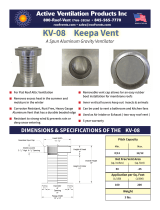 Active Ventilation KV-8-GR Specification
Active Ventilation KV-8-GR Specification
-
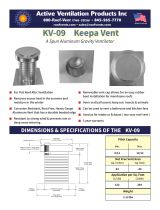 Active Ventilation KV-9-WT Specification
Active Ventilation KV-9-WT Specification
-
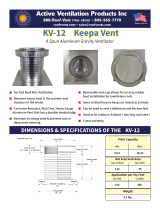 Active Ventilation KV-12-BR Specification
Active Ventilation KV-12-BR Specification
-
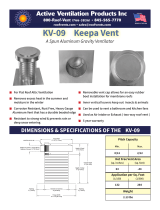 Active Ventilation KV-9 Specification
Active Ventilation KV-9 Specification
-
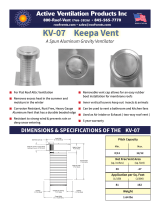 Active Ventilation KV-7-WD Specification
Active Ventilation KV-7-WD Specification
-
Active Ventilation KV-3-WD Specification
-
Active Ventilation KV-5-BL Specification
-
 Active Ventilation KV-3 Specification
Active Ventilation KV-3 Specification
-
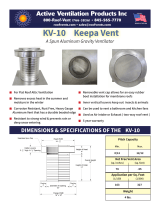 Active Ventilation KV-10-GR Specification
Active Ventilation KV-10-GR Specification
-
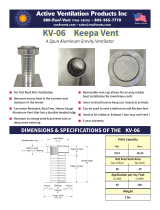 Active Ventilation KV-6-BR Specification
Active Ventilation KV-6-BR Specification

























